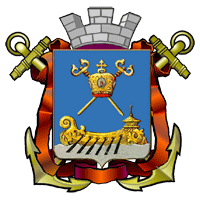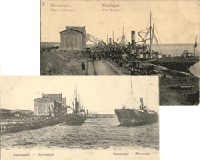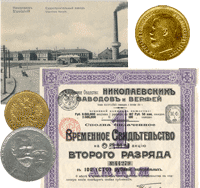
 |

| • Home / Life in Nikolaev in the 19th and the beginning of the 20th centuries. | ||||||||||||
 Life in Nikolaev in the 19th and the beginning of the 20th centuries.
Life in Nikolaev in the 19th and the beginning of the 20th centuries.
During the 1812 war, crew № 75 from Mykolayiv and Sevastopol landed at the mouth of the Danube, joined Admiral Pavel Chichagov's army and participated in the seizure of Paris. The Bug Cossacks and a squadron formed from the local population were also active in that war.
In 1848, the yacht "Oreadna" set out from Mykolayiv, sailed around Europe to Kronshtadt, won the first prize in a regatta there, and returned along the same route. During the nineteenth century, almost all manufacturing in Mykolayiv was of military goods. Even the first educational institution - the Black Sea Navigational College, built in 1798 - was closely connected with the fleet.
During the Crimean War of 1853-1856, Mykolayiv was the administrative center for naval operations on the Black sea. The Mykolayiv Admiralty provisioned the fleet and the army. Four teams of laborers, nearly four thousand people, were sent from Mykolayiv to Sevastopol to assist in that city's defense and one hundred and sixty cannons were deployed there. Local citizens helped the soldiers defend the city. Barracks, schools, and even private houses were converted to hospitals for casualties from the front line. After the Russian army left Sevastopol, opposing forces made a few attempts to breach the defenses - and reach Mykolayiv - but all failed. Russia did not prevail in the Crimean War and under the Paris treaty of 1856, Russia lost some of its territory and the right to keep a fighting fleet on the Black Sea. That marked the beginning of a difficult period for Mykolayiv.
The fleet was disbanded and Mykolayiv's Admiralty sharply reduced the amount of shipbuilding work. The fleet's various institutions and colleges were closed. Sailors were transferred to the Baltic Fleet, the Belomor flotilla, or to the reserves.
The newspaper "Mykolayiv Vestnik" began publication in 1865 and survived for twenty years.
On 16 March 1883 the city's second official emblem was adopted and in 1890 the city's one hundredth anniversary was marked by creation of a city banner. In the late nineteenth century, rapid agricultural development in the region created new opportunities. On Admiralskaya Street, the Donskie brothers (Luka and Andriy) opened a small smithy to repair agricultural equipment. The business grew and soon the brothers were manufacturing plows, harrows and other equipment. In 1894 the workshop moved to Khersonskaya Street (known now as Lenin Prospect) and after the October Revolution, Donskie brothers' business became the basis for the "Dormachine" plant. Eventually, the plant closed and was destroyed in the late 1990s.
The late nineteenth century also saw important foreign investment in Mykolayiv. In 1895-1897 the Belgium Joint-Stock Company and Black Sea Association plants were built. Later, these enterprises merged into the single "Naval" plant. In its heyday, "Naval" was a leading shipbuilder, constructing battleships, torpedo boats, and other vessels. After some years, it was renamed "The Black Sea Shipbuilding Plant". Today, ship construction has almost stopped at Mykolayiv. In 1911, the Admiralty's shipbuilding facilities became the basis for a Russian shipbuilding partnership plant "Russud". Around that time, the Petrikovsky iron foundry and steam mills were active enterprises.
In 1889, the Mykolayiv River Yacht Club opened on the bank of the Ingul River. Eight years later, it moved to Spassky, where a pier and wooden docks were built. A stone building, completed in 1904, became a pearl for the Yacht club and for the city. It remains an important landmark, in good condition.
Some of technological changes of the period meant the closing of businesses. In 1864, a military rocket plant was moved to Mykolayiv from Petersburg. But the value of military rockets declined and in 1910, the factory was scaled down and moved, again, to Shostka. In 1913, a Teacher's Institute opened in Mykolayiv with a first class of twenty five students. The Institute prepared graduates to teach elementary school. Seven years later, it was reorganized and became the Higher Pedagogical Institute, later renamed Mykolayiv Pedagogical University. Today, it has the rank of a state University. Mykolayiv's first Art Museum opened in May of 1914. In 1936 the building housing the museum was demolished and the museum's collection became the basis for today's Vereshtchagin museum.
Print page » |



















